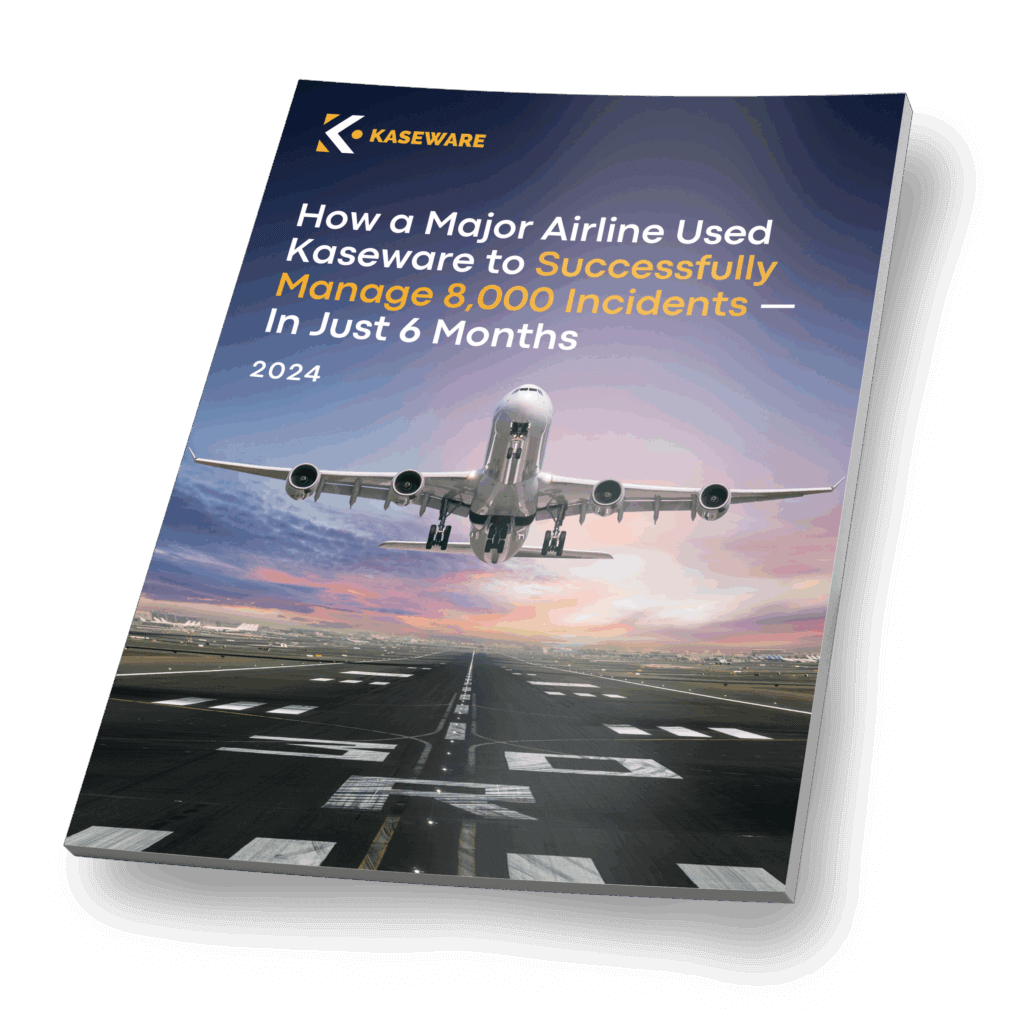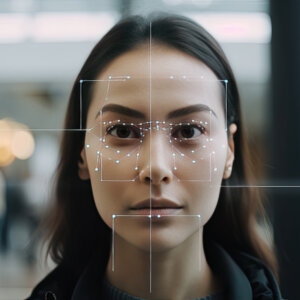
How Kaseware Solves Airline Security Challenges
Change is inevitable in any industry, but it’s especially challenging in sectors like aviation, where safety and security protocols have been honed over decades. While these time-tested systems have ensured safe operations, they often slow the adoption of newer, more efficient technologies.
In a high-stakes environment like airline security, where incidents can range from minor technical issues to severe security breaches, relying on outdated processes may feel safe, but in reality, it leaves airlines vulnerable to inefficiencies and threats. This article will explore how airlines can manage change, embrace technology, and improve their security operations without losing sight of the importance of tradition and safety.
The Resistance to Change in Airline Security
Airlines have long been cautious about introducing new systems into their operations, primarily due to safety concerns. The fear of disrupting established procedures and causing unintentional security risks is understandable, but as the aviation landscape evolves, so too must the tools used to safeguard it. The rise of cyber threats, increasingly complex security challenges, and growing passenger volumes are pushing airlines to reconsider their reliance on manual processes and legacy systems.
The resistance to change, often rooted in a fear of the unknown, can be addressed with careful planning and communication. By demonstrating how modern systems can enhance, rather than replace, the tried-and-true methods currently in place, airlines can begin to build confidence among employees and stakeholders. It’s not about discarding what works; it’s about enhancing those processes with technology that offers greater flexibility, faster response times, and improved accuracy.
The Cost of Clinging to Manual Processes
Manual processes, such as using paper logs or spreadsheets to track incidents, may feel familiar, but they introduce a host of risks that are too significant to ignore. Inconsistent tracking, human error, and difficulties with inter-departmental collaboration are just a few of the challenges that airlines face when relying on outdated systems. These inefficiencies can slow down response times, increase the likelihood of missed compliance requirements, and ultimately compromise safety.
Airlines that continue to use disconnected, manual processes also miss out on the potential for real-time data analysis and pattern recognition, which are critical for identifying and responding to security threats quickly. This lag in response not only puts operations at risk but also jeopardizes the safety of passengers and crew. With the sheer volume of data airlines manage—everything from passenger information to flight schedules—manual systems simply can’t keep up.
The Rising Demand for Digital Transformation
The pressure on airlines to modernize is growing. In 2019, airlines handled 4.57 billion passengers globally, and that number is expected to double by 2037, according to IATA. With this massive increase in passenger volumes comes an equally massive increase in security complexity. Manual systems are ill-equipped to handle this surge, and airlines that resist change will find themselves overwhelmed.
As passenger volumes rise, so too does the demand for faster, more accurate decision-making in security operations. Airlines need systems that allow for real-time monitoring, seamless communication, and quick response times. Legacy systems, many of which are not only outdated but also costly to maintain, simply cannot meet these needs. SITA’s 2020 report revealed that 60% of airlines recognize their current infrastructure is outdated, yet many still struggle with the complexity of transitioning to newer platforms.
The Benefits of Embracing Emerging Technologies
While transitioning to new systems can be daunting, the benefits far outweigh the initial discomfort. Emerging technologies such as AI, machine learning, and real-time analytics have revolutionized the way security threats are detected and managed. These tools can process vast amounts of data in real-time, identifying patterns and potential threats that might otherwise go unnoticed in a manual system.
Kaseware’s platform has already helped a major airline overcome similar challenges during their own digital transformation. Learn more about how they streamlined operations and enhanced security by reading our case study.
How Kaseware Transformed a Major Airline’s Security Operations
Discover how Kaseware empowered a major airline to enhance efficiency and collaboration across their security organization

- AI and Machine Learning: These tools can enhance threat detection by identifying unusual patterns in behavior or anomalies in data, allowing security teams to respond more proactively.
- Case Management Software: Modern case management tools, like those offered by Kaseware, consolidate disparate systems into a single, integrated platform, streamlining operations and improving collaboration.
- IoT and OSINT: The Internet of Things (IoT) and Open Source Intelligence (OSINT) offer additional monitoring capabilities, collecting data from smart devices and external sources to provide a more comprehensive view of potential threats.
- Real-Time Monitoring: With real-time monitoring tools, airlines can respond to incidents immediately, minimizing downtime and ensuring passenger safety.
Kaseware: A Modern Solution for Airline Security
Kaseware addresses many of the challenges airlines face when transitioning from manual to digital systems. By consolidating disconnected processes into one unified platform, Kaseware enables airlines to monitor incidents, manage cases, and ensure compliance all from a single interface. This reduces the risk of human error, speeds up response times, and improves collaboration across departments.
Consolidating Disparate Systems: Airlines often rely on a patchwork of systems to manage security, leading to inefficiencies. Kaseware brings all these systems together into a single platform, providing a common operating picture that enhances communication and ensures that critical data is available to everyone who needs it.
Improving Compliance: Compliance is a significant concern for airlines, given the stringent regulations they must adhere to. Kaseware simplifies this process by centralizing all necessary documentation and automating reporting tasks, ensuring that nothing is missed.
Scalability and Future-Readiness: Kaseware’s platform is designed to scale with the airline industry, adapting to new challenges and technologies as they arise. Whether it’s increased passenger volumes or new regulatory requirements, Kaseware provides the flexibility airlines need to stay ahead.
Curious how Kaseware can help your airline transition from manual processes to the cloud? Download our comprehensive guide, “From Ground to Cloud” and see how your organization can benefit from a secure, streamlined digital transformation.
Planning for a Seamless Transition
Switching to a new system doesn’t have to be a disruptive process. By developing a clear plan, involving stakeholders early, and ensuring proper training, airlines can make the transition with minimal downtime. Kaseware’s modern, cloud-based platform not only enhances security operations but also positions airlines to meet the demands of an evolving industry.
While tradition is important, embracing technology is essential for staying competitive and ensuring the highest standards of safety. With the right tools in place, airlines can navigate the complexities of modern security operations, providing a safer, more efficient experience for both passengers and crew.
Ready to see how Kaseware can transform your airline security?
Schedule a demo today!








